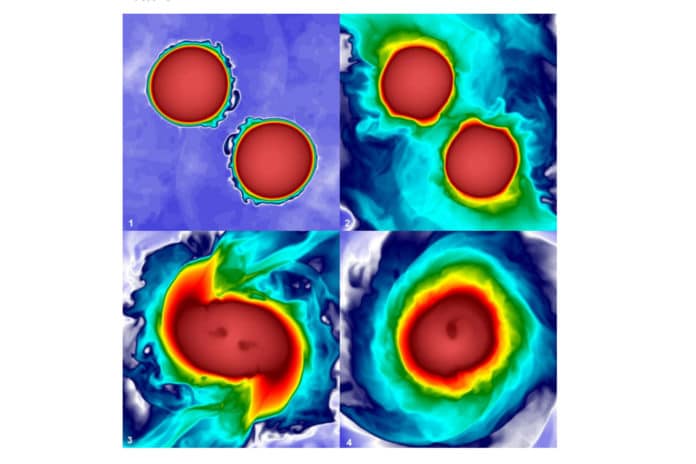We know how much dark energy there is because it affects the universe’s expansion. Other than that, it is a complete mystery. It turns out that roughly 68% of the universe is dark energy.
What if dark energy was just an illusion and general relativity itself had to be modified?
A new study by the SISSA offered a new approach to answer this question. Using computational and mathematical effort, they created a simulation of merging binary neutron stars in theories beyond general relativity that reproduce a dark-energy-like behavior on cosmological scales.
The simulation allowed scientists to compare Einstein’s theory and modified versions. Once sufficiently accurate data is obtained, scientists can solve the dark energy mystery.
Enrico Barausse, an astrophysicist at SISSA, raises the question of dark energy.
He said, “The existence of dark energy could be just an illusion; the accelerated expansion of the Universe might be caused by some yet unknown modifications of general relativity, a sort of ‘dark gravity.”
When neutron stars collide, they make extreme spacetime around them and produce strong gravitational waves. The merger of neutron stars offers a scenario that allows scientists to test the abovementioned hypothesis.
Barausse said, “We can use the data acquired during such events to study the workings of gravity and test Einstein’s theory in a new window.”
In this study, scientists collaborating with physicists from Universitat de les Illes Balears in Palma de Mallorca produced the first simulation of merging binary neutron stars in theories of modified gravity relevant to cosmology.
Miguel Bezares, the first author of the paper, said, “This type of simulation is extremely challenging because of the highly non-linear nature of the problem. It requires a huge computational effort—months of run in supercomputers—that was made possible also by the agreement between SISSA and CINECA consortium as well as novel mathematical formulations that we developed. These represented major roadblocks for many years till our first simulation.”
“Surprisingly, we found that the ‘dark gravity’ hypothesis is equally good as general relativity at explaining the data acquired by the LIGO and Virgo interferometers during past binary neutron star collisions. Indeed, the differences between the two theories in these systems are quite subtle. Still, they may be detectable by next-generation gravitational interferometers, such as the Einstein telescope in Europe and Cosmic Explorer in the U.S. This opens the exciting possibility of using gravitational waves to discriminate between dark energy and ‘dark gravity.”
Journal Reference:
- Miguel Bezares et al, No Evidence of Kinetic Screening in Simulations of Merging Binary Neutron Stars beyond General Relativity, Physical Review Letters (2022). DOI: 10.1103/PhysRevLett.128.091103
